How to Peru in 2 weeks, Day#7: Machu Picchu – Aquas Calientes
I’ve always wondered why these names got stuck in my head since my elementary school. Like Machu Picchu, Titicaca, Popocatépetl, or Vesuvius. Maybe for the way my geography teacher pronounced them, or the way they resonated in my brain? They dwelt in my head for years, feeding my imagination and desire to see what is outside of my little box, making me dream of this beautiful world. And one day, the dream became true..

Surrounded by scattered clouds, the site of Machu Picchu can make you easily giddy, not only because of the steep slopes, high peaks, or narrow valleys, but for the extraordinary beauty you suddenly find yourself immersed into. Quickly I had the feeling to sit down and breathe in the clear air, the surrounding energy, the lush greenery. After taking a couple of pictures, I tried to find a quiet place, further away from the noisy hordes of tourists. I had to walk a little bit more until I saw few empty terraces, where another couple was trying to find a quiet moment. There are no words to explain the feelings and emotions; you just need to go there to witness the moment.
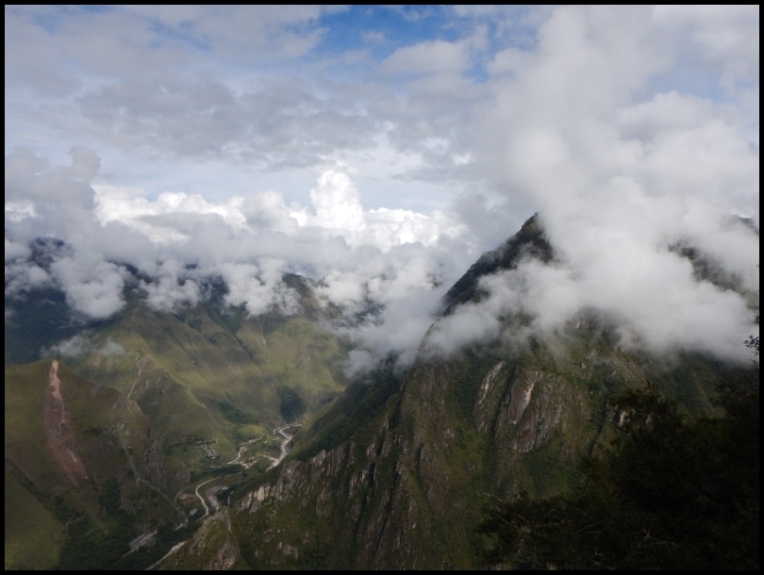
The ruins of Machu Picchu, rediscovered in 1911 by explorer Hiram Bingham, are one of the most beautiful and enigmatic ancient sites in the world, reason the site became an UNESCO World Heritage Site since 1983. Meaning “Old Mountain” in Quenchua language, the site, built 80 km northwest of Cusco around 1450 by emperor Pachacuti (same who built Ollantaytambo), still has a lot to be discovered, or interpreted, beside the existing legends. Either for military purposes, or as ceremonial site, the city is split into two sectors: an urban sector and an agricultural sector. The eastern section of the city was probably a residential one, with many houses, storage rooms, baths, palaces, and the western part was ceremonial, with palaces, temples.

Hidden from below the mountain, it is an architectural marvel how this little fortress has been built: the walls, the terraces, or the buildings. Carved from the local mountain granite, they are fitted together with an amazing precision, using a technique called ashlar, in which the stone blocks are cut to fit tightly without using mortar. This is the same style, similar with the buildings we’ve seen in Ollantaytambo or Cusco.
At an altitude of 2,430 metres, in a middle of a mountain area, Machu Picchu is located above a bow of the Urubamba River, which surrounds the site on three sides. Moreover, located on a saddle between two peaks: Machu Picchu and Wayna Picchu (where the Temple of the Moon is), the city looks like it was having a military purpose. But other interpretations suggest that this was a final place of a longer pilgrimage route starting from the Island of the Sun in Lake Titicaca (where the Inca creator arose from) along Inca Trail, and ending to Intihuatana stone, one of the most important ritual stones in South America.

Little is known of the social or religious use of this site during Inca times, as much of the origins and whole life of the Inca is still surrounded by mystery and mythology. But striking is the artistic architecture with spacious windows, niches for idols, remarkable terraces, and unique water channels, all built on a remote place, a steep terrain, without the use of draft animals, or even the use of wheels. A masterpiece of art, architecture, and engineering, in perfect harmony with nature; the most important legacy the Inca civilization left to mankind.

Machu Picchu is another site in Peru with incredible terraces, used both for agriculture, as well as erosion control. Considered an engineering marvel in these areas known for large amount of rainfalls during the year, they were built to ensure good drainage and soil fertility, while protecting the steep terrain from erosion and landslides.

When the time was ripe for making plans for this trip, we started to ask ourselves few questions. Some of them were answered later on.
When is the best time of the year to visit Machu Picchu? Checking all year round weather, especially the temperatures across all areas we were planning to visit in Peru, I found that the best time of the year to visit Machu Picchu is April to October, basically all months out of the rainy season. All other areas in Peru are more manageable, depends of what type of activities are planned.
When is the best time of the day to visit Machu Picchu? We found that the Peruvian government put a cap on daily tourists to visit MP site, and even more on those who would like to hike Machu Picchu, or Huayna Picchu – the mountains. There are 2 time slots, mornings and afternoons, so we started pondering over. I’ve heard that the most amazing thing to do is to witness the moment when the sun rises over the site. Bang, this was decided, and we purchased our tickets for the morning slot. But only later we learned the fact that these mountains are immersed most of the mornings in the incessant mass of clouds, so basically the sun is right up when it will have a chance to shine over.
How to get to Machu Picchu? Cusco is the main airport in this area, until the Peruvian government will complete another airport in the town of Chincero of the Sacred Valley; or you can arrive by bus since the long-distance busing is renowned in South America.
From Cusco, one can either have a day trip directly to MP, or can stop over in Ollantaytambo, or Macchu Picchu Pueblo (Aguas Calientes) if having more time to explore this area. Or can combine the distance with one of the 6 trekking routes: Salkantay, Lares, Choquequirao, Vilcabamba, Huchuy Qosco, Inca Jungle, or the Classic Inca Trail.

Once in Machu Pichu Pueblo/Aguas Caliente, you can either take the bus to the park (you can purchase your ticket in any train station, at the tourist office, or at the bus stop the night before or on the spot), or hike the way up for free (about 90 minutes). We preferred to save ourselves for the walk in the park, and we took the bus. It took us about half hour to wait in the 100 m-long line. It might be frustrating, but all 26 buses ran continuously, departing as soon as they were loaded.
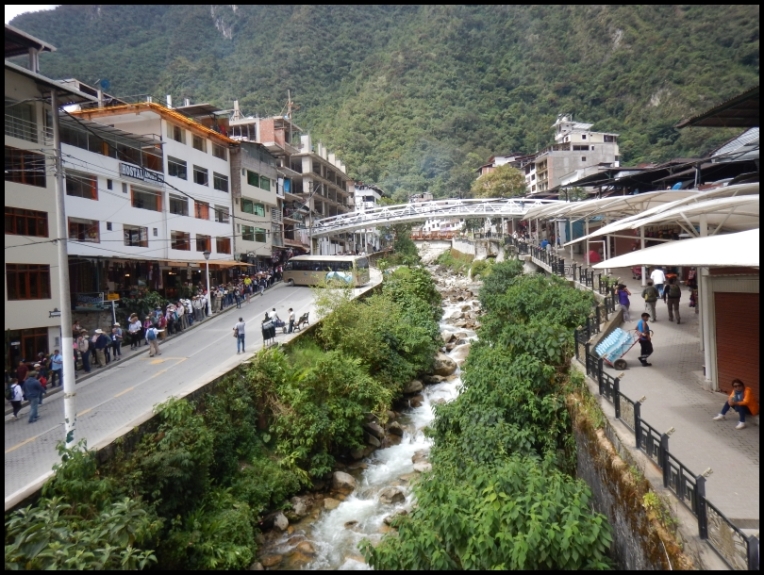
Where to stay in Machu Picchu? Any of these cities Cusco, Ollantaytambo, or Machu Picchu Pueblo/Aguas Calientes have plenty of accommodations to choose from. We were a little bit reluctant, as most of them didn’t allow us to pay in advance through our online booking channels, but had absolutely no issues emailing our hosts, asking for directions, or for a ride from the airport. We were thrilled actually by the kindness and the easiness we’ve made all our arrangements. But while some places accept credit cards, some of them do not, so anyone should be prepared to have some cash anytime.
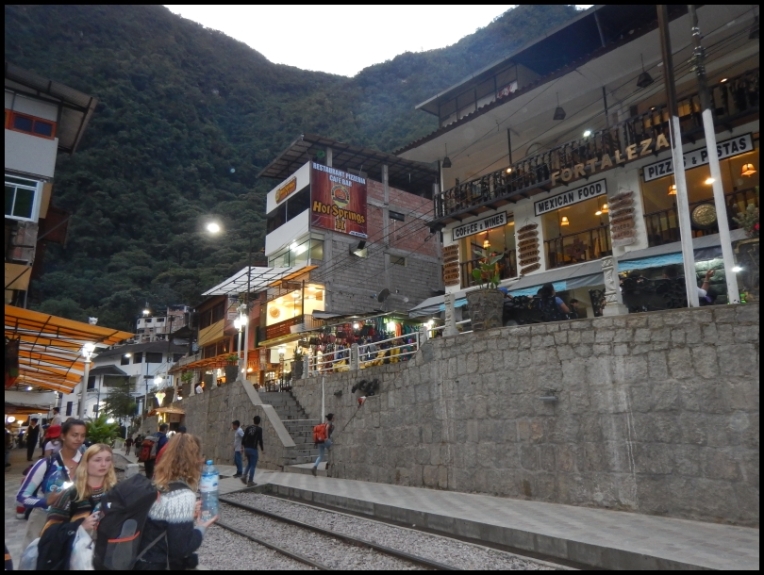
Where to eat in Machu Picchu? While Machu Picchu Pueblo has a huge variety of restaurants, you might get your breakfast along with your accommodation. A good breakfast would be a great choice before you’re leaving Aguas Calientes, as it will keep you full of energy for most of the day. Our host has kindly asked us if we want to eat the breakfast before leaving, or we want it on the go. So everything was packed, and we ate the sandwich while waiting for the bus. We also had an apple, a bottle of water, and a granola bar, which were a great snack for later in the afternoon. The options to eat at the MP site are limited: you can either eat at the Sanctuary Lodge, have a snack right outside of the entrance, or bring yourself a lunch box. You are basically not allowed to eat in the park itself, but if you have a small snack, and you’re leaving no trace, you will probably be able to have it. My understanding is that you can leave your bag at the entrance (for a fee), and it is highly recommended, since you are not allowed with big backpacks inside of the park. We left our backpacks in AG, at our hotel, and only had with us a small one with water and snacks. Also, you are not allowed to bring plastic bottles in the park, but I haven’t seen anyone to be bothered if nothing left behind.

What else to see beside Machu Picchu? Beside restaurants and hotels, Aguas Calientes offers hot springs (as the name suggests), and a variety of spas for massage: you can’t really walk around without getting offers and “promotions” at every few steps. Wandering through the city is the best thing one can do, to admire the sculptures spread throughout the whole city. Majority are part of the Inca culture, or personalities from their history. At day, or night, they are all impressive by nature or stature.
Tip(s) of the day:
*You need to purchase your entrance ticket (from the official site, or any operator) AND the train ticket (from Peru Rail or Inca Rail) as early as possible in the year, as they are limited;
*Other than a map of the site at the entrance, there are absolutely no explanatory signs in the park, therefore absolutely no information about the ruins. You can either hire a local guide at the entrance, or else find information ahead of your visit here;
*Always carry small change with you, as most of the public washrooms in Peru are 1 or 2 soles. Also, to carry some cash with you, as not all places accept cards;
*We were able to leave our bags at the hotel in AC while going to MP site. Otherwise I’ve seen a storage place near the bus station;
*The departure platform is in a different place than the arrival. Make sure you know ahead of time where the train leaves from Aguas Calientes.
~ visited in April 2019
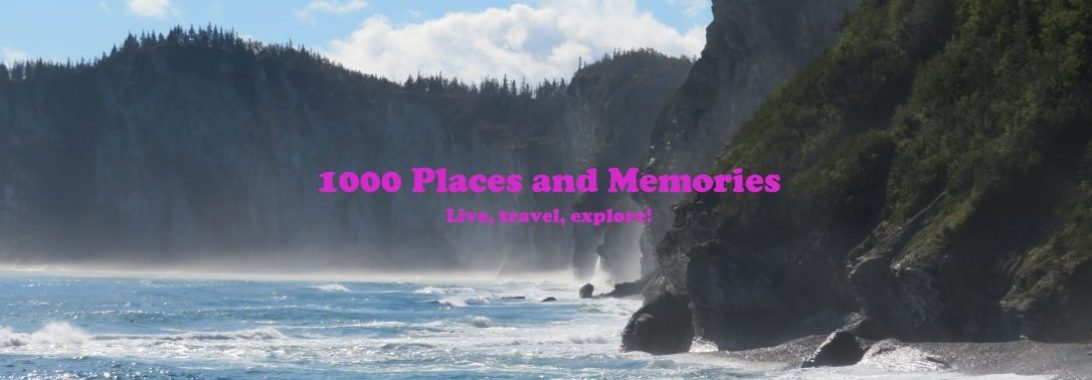





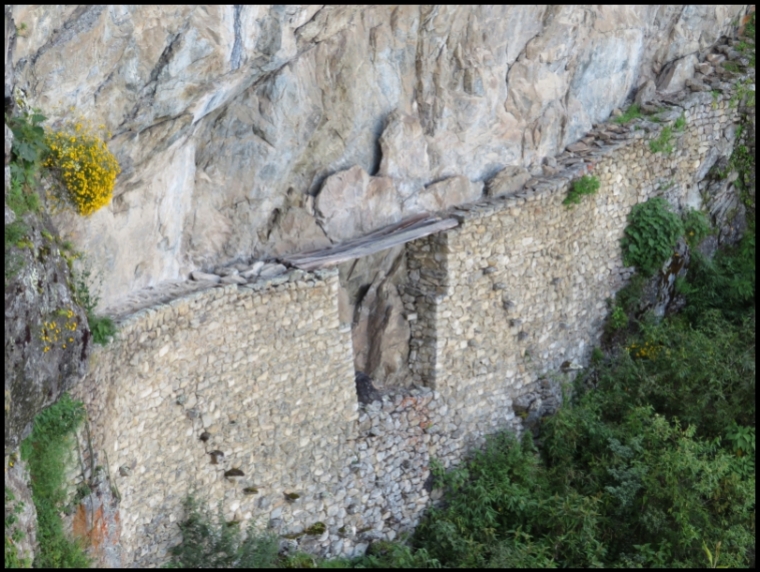








Amazing!
LikeLiked by 1 person
Thank you Donna!
LikeLiked by 1 person
Machu. Picchu is indeed an extraordinary place to explore and photograph, would love to visit one day 😀 thanks for sharing and safe travels 😀 Aiva
LikeLiked by 1 person
Thank you Aiva for your nice comment! I’m sure you will have a chance to visit Machu Picchu one day, and to enjoy exploring the area😊
LikeLiked by 1 person
We love Machu Picchu tahnk you for taking us back. Eve though its busy with tourists I’m glad you found a quiet spot to enjoy it.
LikeLiked by 1 person
Glad for bringing you great memories! Indeed, it can be really busy up there. We were lucky to go in the morning though; after we came back from the Inca Bridge trail all paths were fully packed. Thank you for stopping by, Happy Travels!
LikeLiked by 1 person
Great photos and write-up of one of my favourite destinations!
Looks like you had loads of fun.
LikeLiked by 1 person
Thank you Nilla! We loved all places we visited in Peru❤️
Hope you had a wonderful Christmas, wishing you a great 2020!!
LikeLiked by 1 person
Lovely to revisit Machu Piccu and the Sacred Valley again through your blog post and beautiful photos. It truly was one of our most memorable trips and we loved Peru overall. We were there for a month and would go back in a heart beat.
Great post.
Peta
LikeLiked by 1 person
Thank you Peta! It is not hard to fall in love with Peru – Sacred Valley and Colca Canyon especially. We’ve only had 2 weeks available, and would definitely go back to further explore if I could😊
Have a wonderful 2020!
LikeLike
Would love to go back as well… Remains one of our favorite places in the world.
LikeLiked by 1 person
This was a fantastic and informative overview of Machu Picchu, Christie, really well done. Wonderful photos, and some of them from an impressively high perspective, and your narrative was superb. I enjoyed a wonderful visit to MP, Ollantaytambo, Cusco, and surrounding areas some years back, and your descriptions were great. The stonework and ingenuity, in such a remote and high altitude spot, are inspiring, on top of the mystery of their civilization make this an incredibly beautiful and curious place to visit. Great post.
LikeLiked by 1 person
Thank you for your encouraging comment Jet, it means a lot to me. Wishing you great new adventures in the new year!
LikeLiked by 1 person
Fabulous shots…was really cloudy when visited.
LikeLiked by 1 person
Thank you!! Indeed, the weather in the mountains can be unpredictable. We considered very lucky, the weather was amazing all the time we traveled in Peru; only a bit of rain after we came back from MP, but that was exactly at the supper time, which we didn’t mind🙂
LikeLike
Great photos! Fabulous place
LikeLiked by 1 person
Thank you!! Hope you’ll be able to visit MP one day – soon!! xx
LikeLiked by 1 person